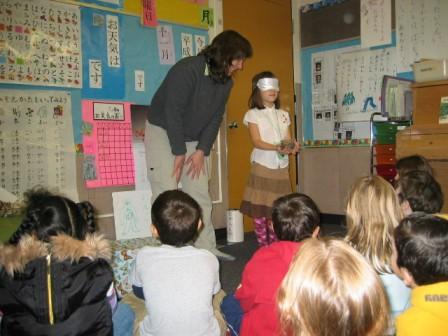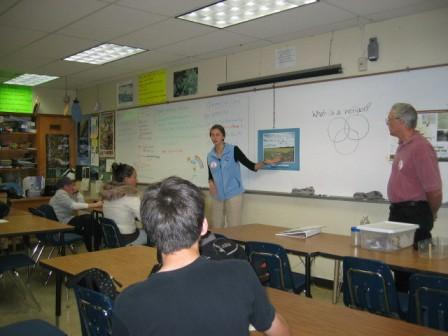|
Classroom Outreach
WREN has developed classroom outreach programs designed to teach students about the wetlands in West Eugene. These programs are available to elementary and middle school students in the 4J, Bethel and Springfield school districts as well as private and charter schools. All programs are tied to Oregon State benchmarks, with topics varying from general wetland ecology and bird migration among many others. Providing students with interactive learning experiences, WET’s intentions are to help teach them about the diversity of the West Eugene Wetlands and the world that surrounds them. Outreach programs also review safety scenarios, such as the proper behavior upon encountering an animal. Field trips to the wetlands often follow classroom outreach programs which help to familiarize students with what a wetland is and what they may find there.
The Wetlands Educational Team is responsible for providing supplemental assistance to WREN facilitators both in the field and in the classroom, often leading or supporting these programs. Field trips take place at the West Eugene Wetlands and are available to grades 1-5. WREN offers two types of field trips to its potential students, the Wetlands Exploration Stations trip (grades 3-5 only) and the Wetlands Walking Tour. This breakdown allows teachers to adapt their students’ wetlands experience to focus on areas of personal interest.
During this school year WET has been engaged in bringing forth activities to those who wish to experience the beautifully diverse landscape of the West Eugene Wetlands. Throughout the Winter and Spring 2007 terms the team has created six diverse lesson plans, under the guidance of their graduate project manager, and presented them on May 19 th during WREN’s Family Wetland Exploration day.
The topics of these programs spanned the diverse interests and specialties of team members, allowing each person to focus on their personal passion.
Andy Hirtle, an avid birder, shares his experience by creating a lesson plan surrounding migratory birds of the wetlands entitled "Under Wetlands Skies".
In "Busy Bees and Butterflies," a program focusing on the interactions between local pollinators and flowering plants, Terra Chaney provides a wealth of knowledge from her studies in biology and other natural sciences.
Steve Jang's background in environmental science culminates in his lesson, "Wetland Space Invaders," a game where children investigate invasive plant and animal species.
A creative art component was provided by Chelsea Prine, broadening the scope of the teams' lesson plans to add a multidisciplinary aspect. This program, "Wetland Expressions", provides a space for students to reflect on other activities in the wetlands through art, nature journaling, and poetry.
Additionally, Kate Bullard took a sociological approach to create "What's a Wetland Worth?", a role-playing activity centered around human values and actions and the way they affect the wetlands.
With a love of watershed conservation and restoration, Amanda Atkins inspires others through her lesson plan, "The Path of Water," which focuses on wetlands and their part in watersheds.
|


